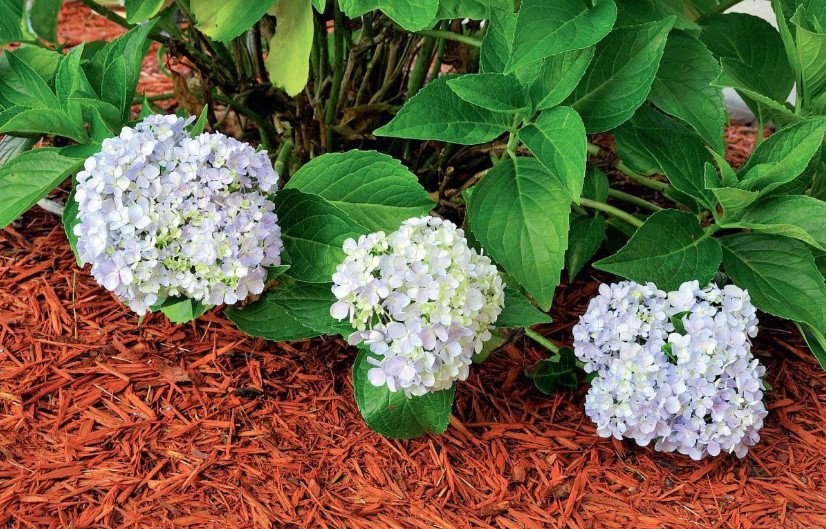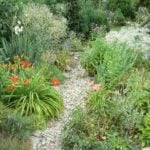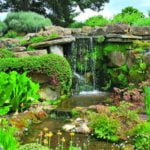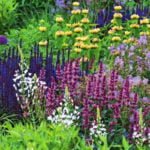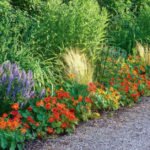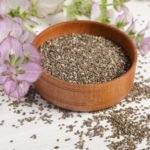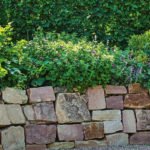How to combine beauty and benefit “in one bottle”? Very simple — to master mulching. This simple technique will protect plants from weed attacks, increase soil fertility and make flower beds and beds as cute as possible.
It is “magic powder” not only unrecognizably transform the garden, but also give the opportunity without much hassle to eat healthy and delicious fruits and enjoy the luxurious inflorescences.
The popularity of the agricultural technique is quite understandable: it is easy to implement and at the same time multitasking, that is, allows you to solve several problems at the same time. The sheltered mulch soil is protected from overheating and overcooling, evaporation, moisture and weathering, from silting and cracking, and the mulch itself enriches the earth and improves its structure. But the main advantage, which is appreciated by all, and especially “Sunday” gardeners-mulching saves from endless weeding, because in well-sheltered areas weeds lose their aggressiveness, as all the effort is spent to break through the bulk “armor”.
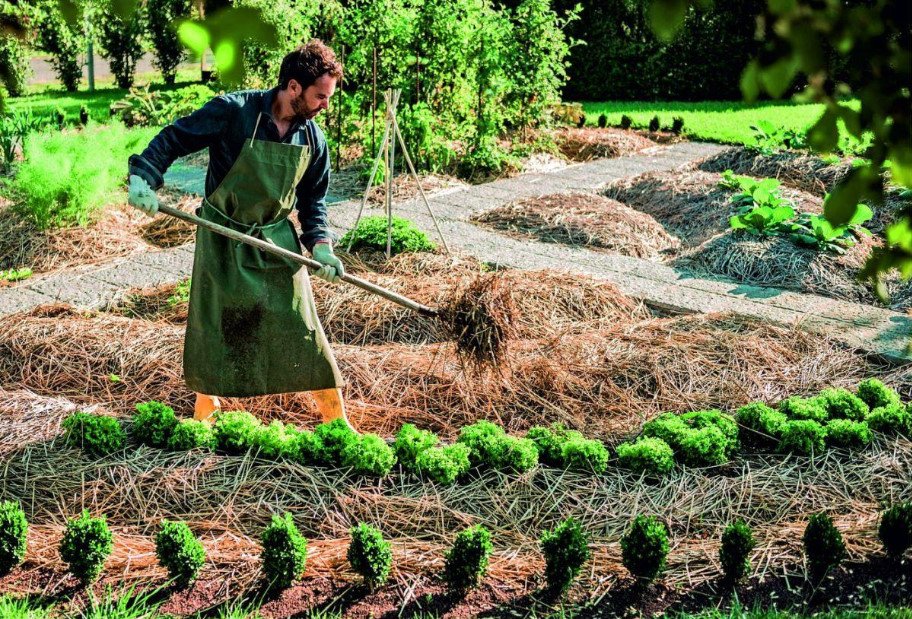
And the material for these purposes and usually do not need to buy, it is almost always at hand:
- mown grass,
- compost,
- pine needle,
- dry leaves,
- Newspapers and cardboard,
- sawdust, shavings and shredded branches left after pruning.
But if the mulch for garden beds should first be useful and accessible, then in the garden (in flower beds, in the rose garden, near the pond) you want it not only did not spoil the picturesque picture, but also pleased the eye. What to do? Choose! In fact today outdoor areas to delight in a wide range, and among the possible options to meet dumping, and which are able to bring benefit and to serve as bold element of decor. Everyone has their own features, pros and cons, and today we will talk about them.
Splint
Wood chips are incredibly popular with urban landscapers. In autumn, they fall asleep with colored chips deserted after annuals flowerbeds, and in the gray gloomy days, bright patterns hide the bare cold ground, which until recently smelled of Petunia and Tagetes.
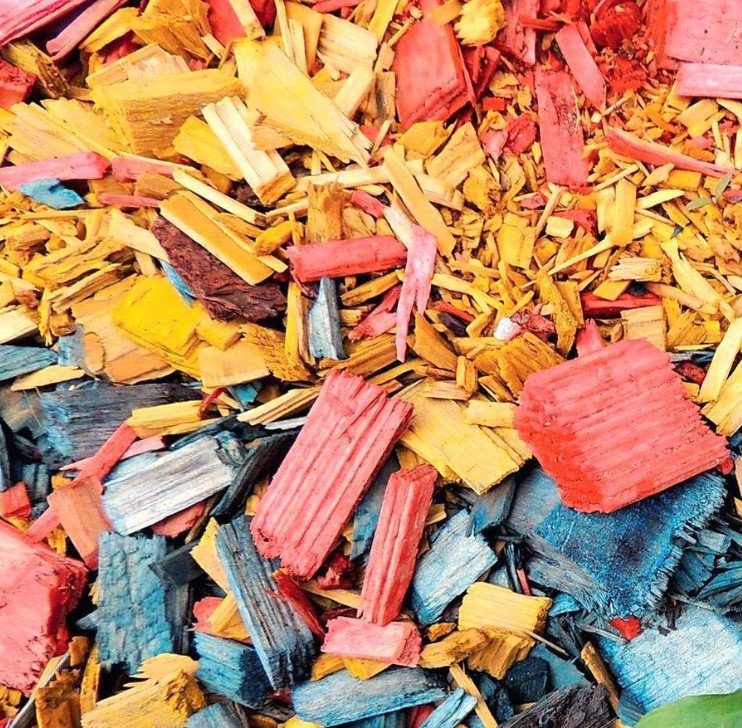
Manufacturers of multi-colored chips claim that they use only natural dyes (resistant to the sun and moisture), which do not harm the soil and do not fade for a long time. But wood chips (both natural and painted) are not only decorative, they are:
- good inhibits the growth of weeds,
- retains moisture in soil,
- it warms and enriches it.
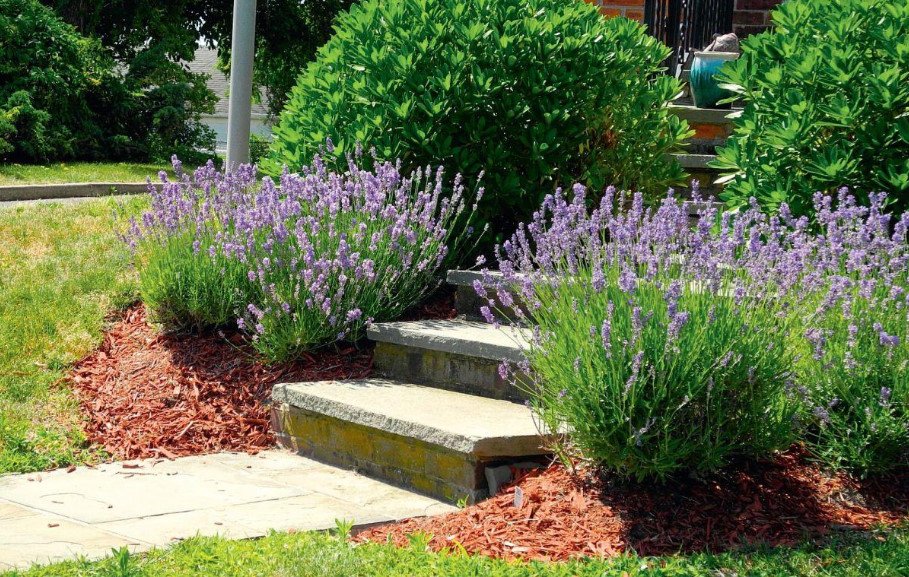
However, due to the fact that the wood material (such as chips, sawdust, branches, bark) rot rather slowly (2-3 years) and extracts nitrogen from the soil, in the garden it is better to mulch tree trunks of adult trees and shrubs with a deep root system.
For the young and actively growing under a layer of wood chips, it is desirable to spread the humus or compost, and in the flower beds, sprinkle the chips on top of a black non-woven cloth: it is not just his will decorates, but additionally will protect the area from weeds, overheating and cooling.
In the spring of mulch is easy to rake in a pile to give the ground to dry quickly and warm up or make room for new landings.
Depending on the wood species from which the chips were obtained, it has different properties. For example, chips and shavings of hardwoods (Linden, birch) acidify the soil less than coniferous.
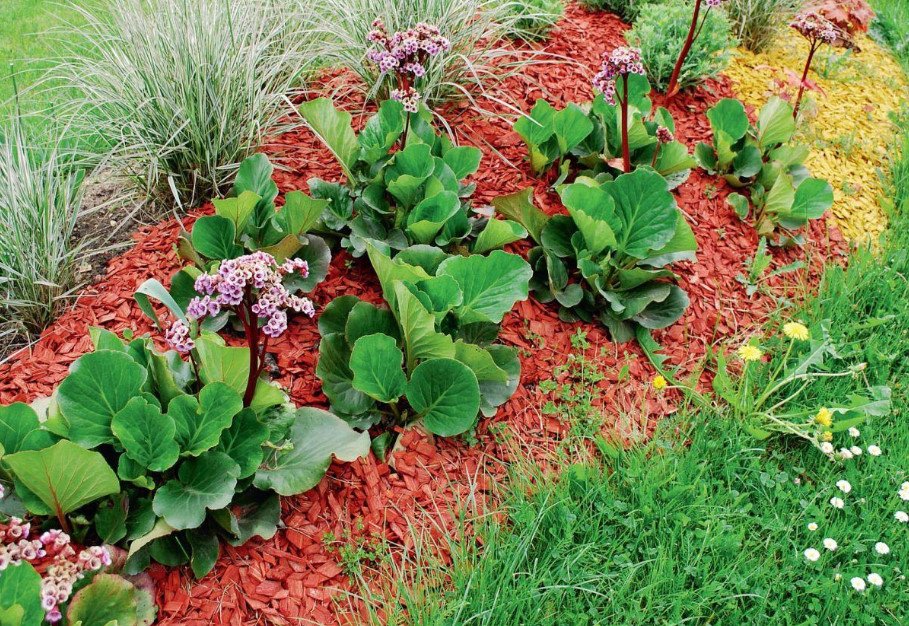
Important: mulching flower garden painted chips, remember that the filling should be in harmony with the surrounding plants, emphasize their beauty, and not distract from it.
Bark
Naturally and extraordinarily impressive looks another mulching material-the bark of trees. It is textured, has different shades and perfectly sets off the greens — leaves, herbs and needles, and also visually combines not only with plants, but also with stones, tiles, wooden buildings in the garden, becoming a mediator between living and non-living material.
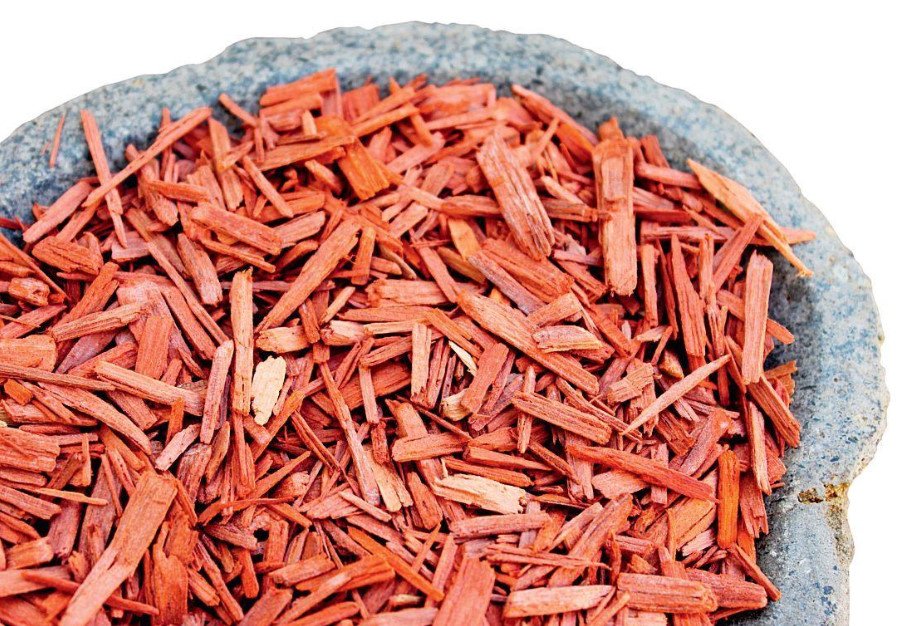
For mulching usually use oak bark, birch, larch, cedar and pine, and the size of the fractions are presented in three versions:
- Large (9-20 cm) — the most durable and the most spectacular. It is best combined with large plants — trees and shrubs, sometimes it is used for decorating sites.
- The bark of small and medium fractions is suitable for mulching any flower beds and tree trunks.
Tip: mulch planting with a mixture of bark of different sizes, then the rot will take place slowly and naturally, gradually enriching the soil and feeding the plants.
Refresh the mulch layer of bark, usually every 2-3 years. To the growth of weeds beneath the crust was most depressed, the mulch layer should not be thinner than 5-7 cm will Enhance the effect of the “pacification” of weeds additional litter from newspaper, Kraft paper or cardboard.
Important: when choosing a bark for mulching, consider the characteristics of each of the varieties. For example, tannins, in abundance contained in the oak bark, scare away snails, and phytoncidic properties of conifers inhibit the growth of pathogens.
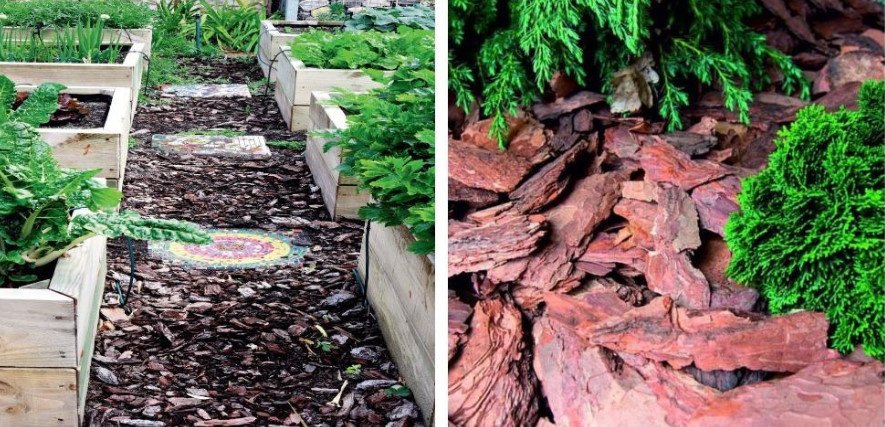
There are some varieties and an additional bonus-a noble aroma, which produces cedar bark and pine, heated in the sun.
Cones and shells
Mulch materials can serve as other parts of plants, for example, the shell of pine nuts. It is a rich in composition and useful properties of the material, which can warm the soil, and feed it, and protect against pathogens. But the aesthetic qualities of the shell are doubtful.
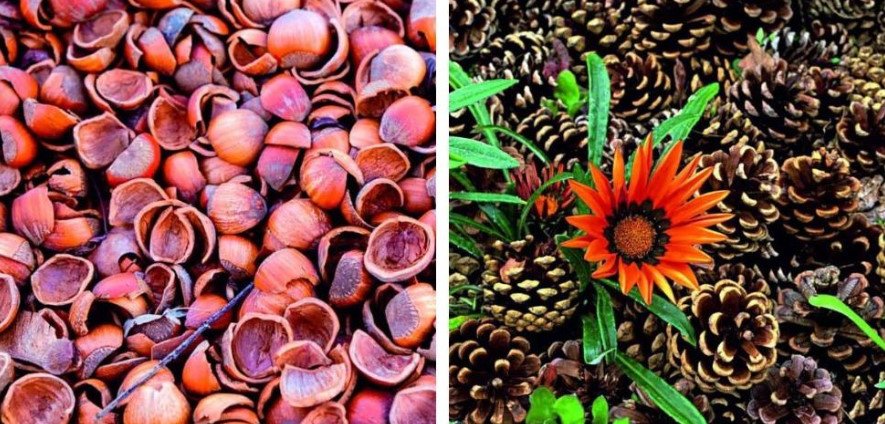
Sometimes the minus of mulch from wood and especially coniferous materials is its ability to increase the acidity of the soil, but … many plants prefer this medium in the middle zone!
In the presence of a shredder, cut trees and branches, as well as bark, wood mulch can be made independently in your garden.
Gravel
If you grow Calcicole and plants that prefer alkaline soils, pick up other materials for mulching, such as gravel, pebbles or seashells.
Such beautiful, durable and extremely diverse dumping can not only decorate the garden, its paths and open areas, but also significantly facilitate the work of the gardener. Especially if the garden is young and Sunny, and the soil is poor. In such areas often create gravel flower beds, where gravel, gravel, pebbles, stones of various sizes and shells play no less, and sometimes a greater role than plants.
Gravel flower beds can be monochrome or multicolored, of stones of different breeds, sizes, textures, laconic or motley, patterned. Gravel is an ideal material for creating a unique garden. There is where the fantasies of the gardener can play out! Usually for registration of such objects planted plants textured, spectacular, warm and sun-loving, drought-resistant and undemanding to soil fertility.
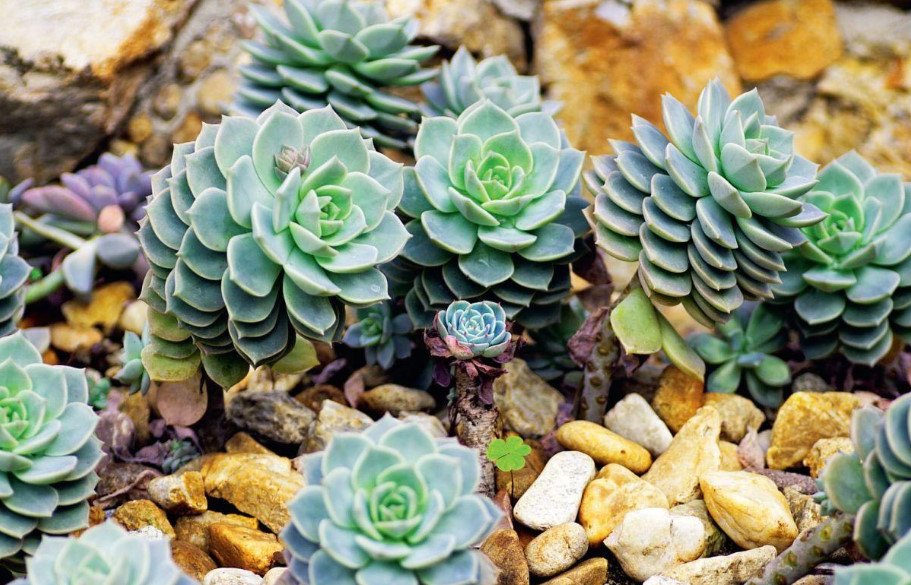
This material is also appropriate in other rocky gardens, in landings near water bodies, and just in flower beds, in borders. Gravel warms the earth, improves the mineral and physical composition of the soil, prevents the growth of weeds, and those that still manage to break through the stones, will be weak and unviable. To cope with weeds was even easier, gravel in large areas scattered on non-woven fabric, and plants are planted in specially made cuts.
Cons material-its impressive weight and price (some types are quite expensive). In addition, in hot, dry weather, it can be too hot and “overheat” the neighboring plants. And: white gravel much it shines in the sun, and are especially noticeable debris, dry leaves and dirt.
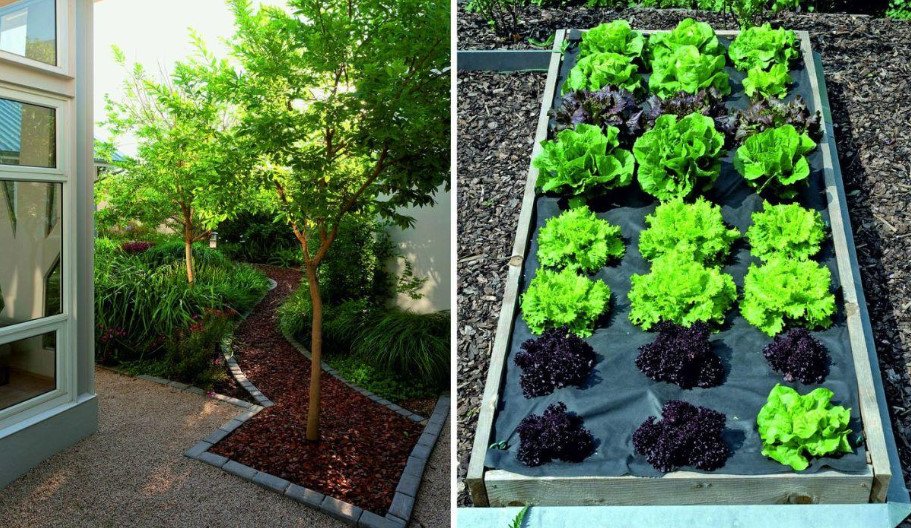
Nonwoven fabric
And finally, black non-woven cloth(agril, spunbond or lutrasil) significantly ease the life of a gardener. Dark dense surface passes air and water, but not light, so does not develop weeds.
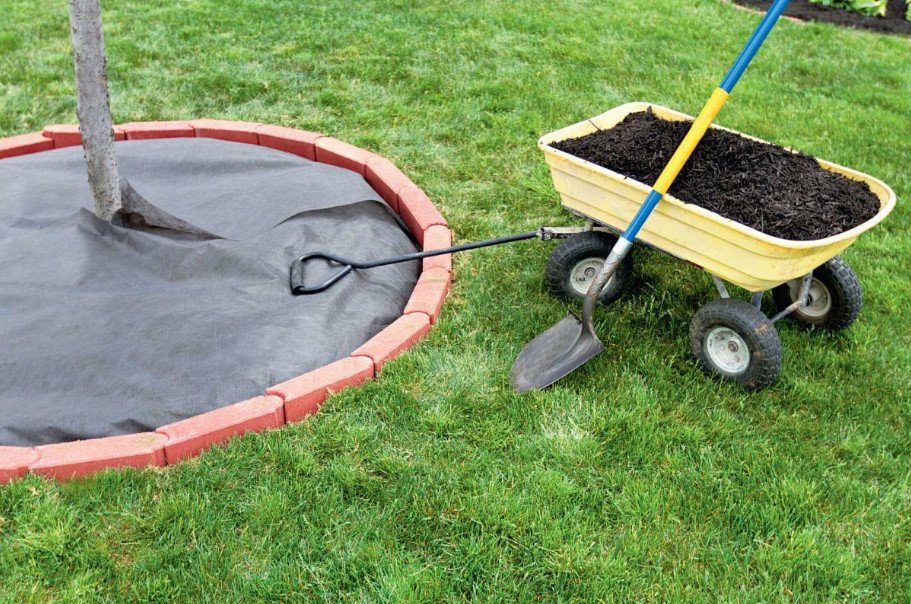
And this canvas increases the temperature of the earth by 1.5-2°C, accelerating the growth, flowering and fruiting of plants, which is especially important in the climate of the middle lane and colder regions. Even in winter, the soil covered with film does not freeze so much. Of course, it is difficult to call this material beautiful, but life does not stand still. And on sale have already appeared multi-colored options-red and two-color canvas. Perhaps soon enterprising manufacturers will come up with something more original.
The only disadvantage of this artificial material: unlike organic mulch, it does not decompose and does not feed the soil. But since the temperature of the soil under the film is always slightly higher, it means that the earth warms up faster and retains heat longer, and the microorganisms contained in it behave more actively, the processes of decomposition of organic matter are faster, and the amount of produced humus increases. So it turns out that the film also has a positive effect on the fertility of the earth.
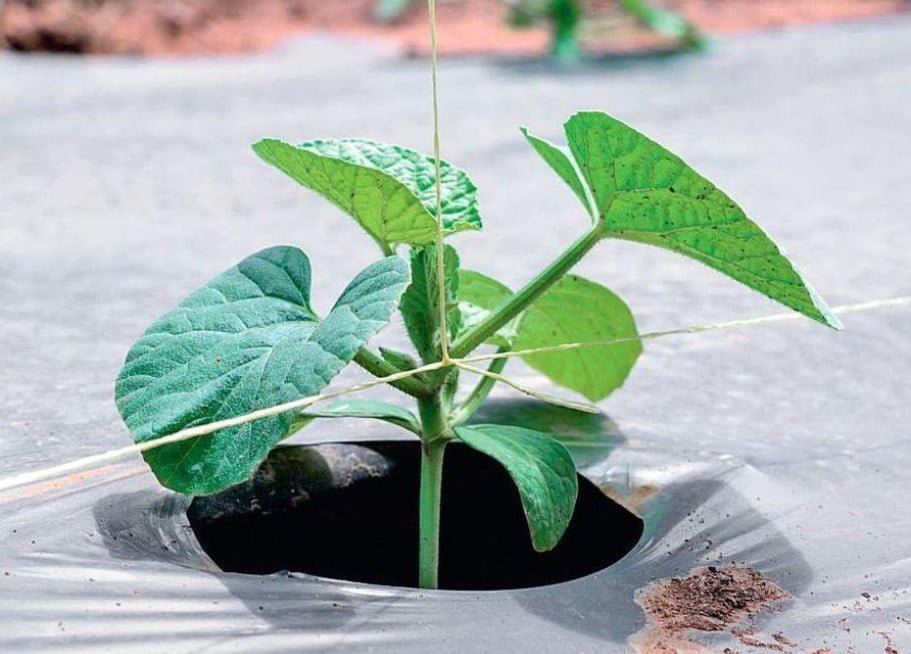
Duly
Materials for mulching are heterogeneous, but the rules of their use are the same for all. Do not forget about them, so as not to harm the land, plants and the whole garden.
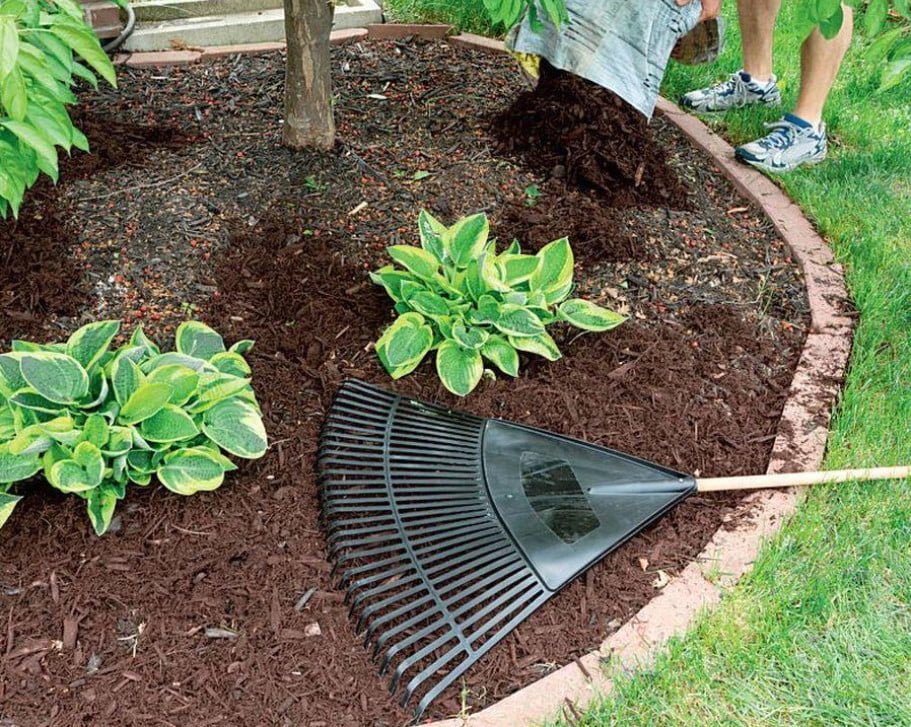
- Before you scatter the mulch on the selected area, first well clean the area from weed and loosen the surface.
- When covering the soil with mulching material, consider its features. The mulch layer should not be too thick or dense to prevent root rotting due to difficult oxygen access.
- In spring mulch the soil only after it warms up and dries enough.
- With the arrival of spring, release the emulsified areas from” sprinkling ” to the soil warmed and dried.
- Avoid mulching on waterlogged soils – is a natural “dressing” will rot.
- Heavy loamy soils cover only with a thin layer of mulch (not more than 2 cm), as with insufficient ventilation and increased moisture, stagnant phenomena of the lower layer of mulch rot can occur.
- Mulch should not come into contact with the trunks of trees or shrubs and stems of plants — so they do not rot.
